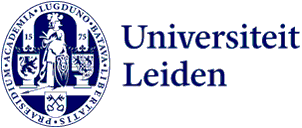Exhibition honours Niels Stensen, pioneer in medicine and geology
Seventeenth-century Danish scientist Niels Stensen made groundbreaking discoveries in the anatomy of the body and of Earth. This Leiden alumnus’s theories are still relevant, as an exhibition at the Oude UB shows.

Sparkling minerals, cross-sections of Earth, medical drawings and objects. The exhibition shows how multifaceted Niels Stensen (1638 - 1686) was, says curator Jan de Coo from the Leiden Geology Society. ‘This Danish scientist was one of the greatest 17th-century scholars but has more or less fallen into oblivion here in the Netherlands, which isn’t right. Stensen studied medicine in Leiden. He was a typical Renaissance man who looked at the world with eyes wide open.’
Studies in Leiden
After studying in Copenhagen, Stensen dived deeper into the anatomy of the human body. On his trips through the Netherlands, he also started to study the anatomy of Earth. He discussed this with fellow students such as Johannes Swammerdam and Nicolaes Witsen, who would also go on to become illustrious scholars.
-

-

The exhibition features anatomical drawings based on Stensen’s discoveries. -

Group photo of the Geology Institute in Van der Werfpark in 1975. -

Dynamic model of Earth
In Leiden, Stensen developed new ideas at a time when geology did not yet exist as a discipline. ‘Stensen was one of the first to embrace a dynamic model of Earth, while his peers clung to the idea of a static and unchanging world’, says De Coo. ‘That is why he is considered the father of modern geology.’
Energy transition
The curators also want to show that his theories are still relevant today. Energy transition is one of the major challenges of our time’, says De Coo. ‘We desperately need geology to understand how to find the natural resources such as lithium, magnesium and cobalt that are needed for batteries for electrical devices.’
In short, geology is hot. De Coo graduated in the 1970s with a geology degree from Leiden, but the programme was scrapped in the 1980s. Like now, drastic cuts had to be made and the then minister of education decided to concentrate geology in Utrecht. De Coo still cannot comprehend this decision. ‘We had a flourishing, world-leading Geology Institute here on Garenmarkt. But the minister insisted on scrapping the Leiden programme. It was a huge loss. All the collections went to the predecessor of Naturalis, so they did at least stay in Leiden. The exhibition features stunning examples of minerals such as malachite and chalcocite.’
The Leiden Geologist Society is holding a symposium in Lokhorstkerk on 8 February. The day will begin with the unveiling of a plaque at Stensen’s former home at Rapenburg 84 by Danish Deputy Head of Mission, Julie Herschend Christoffersen. In the afternoon there will be presentations about the scientific and philosophical heritage of this unique scientist.
